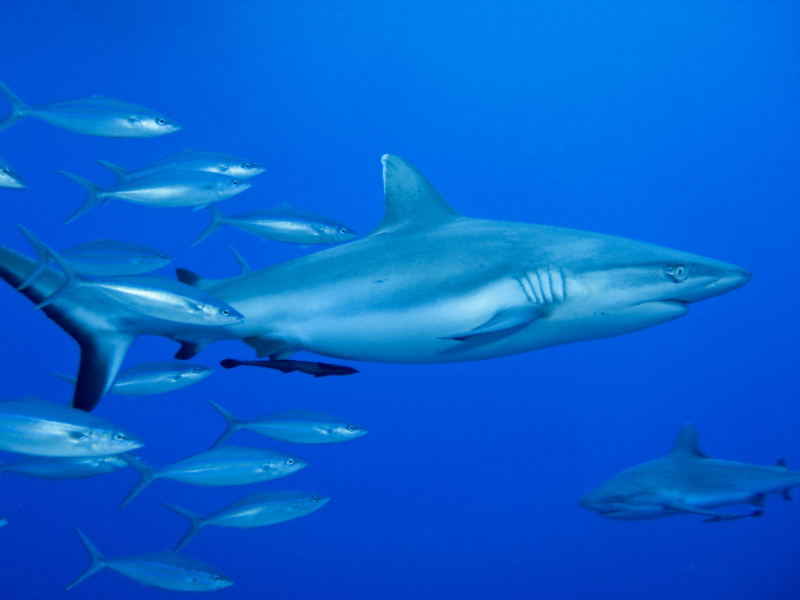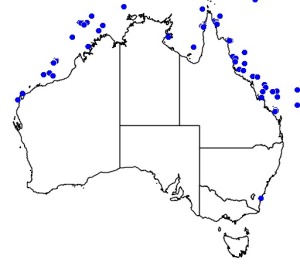Colours
Distinguishing features
A medium sized shark with a streamlined grey body and whitish underparts. The rear of the tail has a broad black margin, and the second dorsal, anal, and underside of the pectoral fins also have black margins.
Size
- Up to 172 cm (Length of specimen)
Depth range
- Depth range data is not yet available.
Synonyms
Distribution
Distribution and habitat preferences
Reef slopes and deeper channels.
Can be seen occasionally along the exposed outer reef slopes and inside the entrance channel.
Behaviour
The Grey Reef Shark is usually seen singly or in small loose groups in areas of good current flow or where reef edges are adjacent to deeper water. It feeds on reef fishes, cephalopods, and crayfish and is mainly active at night, although this species will feed in the daytime as well. Grey Reef Sharks are viviparous and give birth to 3-6 juveniles per litter, and these are about 60cm at birth. Female Grey Reef Shark have been documented to return to regular daytime aggregation sites in spring at Johnston Atoll, Central Pacific, where their numbers may reach 80-140 individuals in a small area. The reasons for these aggregations are unknown, and the sharks disperse each night to feed.
Web resources
Danger
- unspecified - This shark has a definite home range and may become agitated by the presence of divers or snorkellers in its territory, particularly if approached closely or trapped against the reef wall. Threat displays indicate that the shark is agitated, and these include hunching the back, lowering the pectoral fins, shaking or shivering of the body, and snapping of the jaws. If the diver does not leave the area, then the shark may charge rapidly and possibly bite in self defense. To avoid agitating this species, do not approach closely or head on, and do not herd the shark in close to the reef. Shark bites may cause deep lacerations - for first aid click here.
References
- Economakis, A.E. and P.S. Lobel (1998). Aggregation behavior of the grey reef shark, Carcharhinus amblyrhynchos, at Johnston Atoll, Central Pacific Ocean, Environmental Biology of Fishes, 51: 129-139. LIRS catalog number 90002.
- Martin, R.A. (2007). A review of shark agonistic displays: comparison of display features and implications for shark-human interactions, Marine and Freshwater Behaviour and Physiology, 40: 3-34. LIRS catalog number 90001.
- Papastamatiou, Y.P., B.M. Wetherbee, C.G. Lowe and G.L. Crow (2006). Distribution and diet of four species of carcharhinid shark in the Hawaiian Islands: evidence for resource partitioning and competitive exclusion, Marine Ecology Progress Series, 320: 239-251. LIRS catalog number 90003.
- View all references




